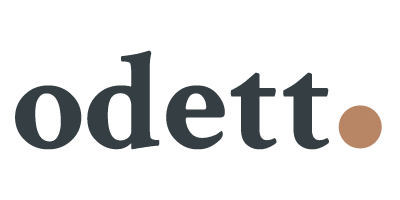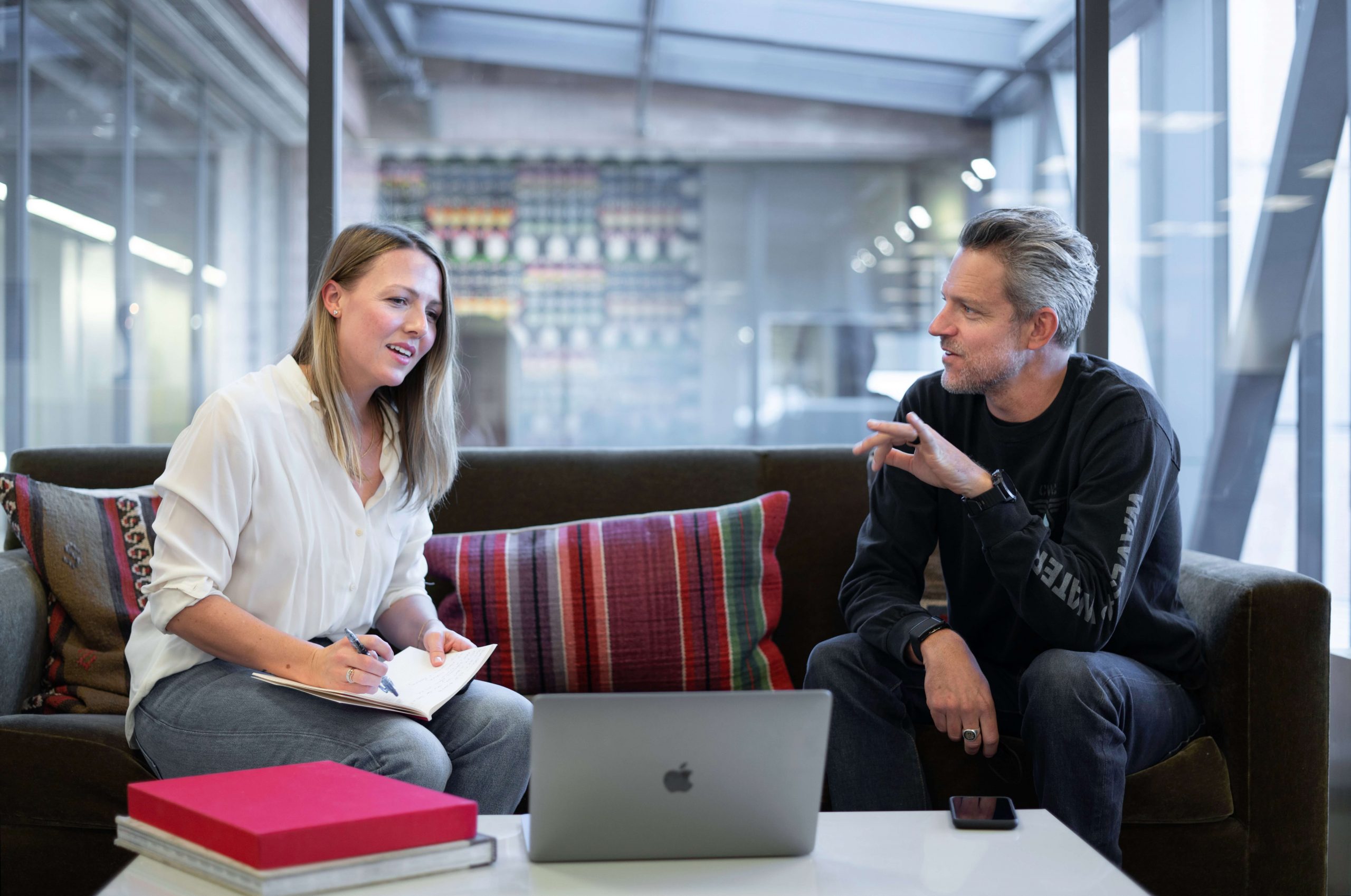Interviewing your users often leads to insights into their core experience. Through interviews, you can gain knowledge about the problems your users are facing, how they face them and what they experience during. And a lot of people either don’t do interviews or mess them up, leading to inconsistent or unusable results. This post will provide you with tips to do user interviews like a pro.
A user interview isn’t just sitting people down and having a casual chat. It’s not about what they like or dislike but about learning what a user is trying to do and understanding what is and isn’t working for them. To get to that core experience, user interviews need to be well thought out, otherwise, you get irrelevant data. And the only thing that’s worse than no data, is bad data.
A good user interview can help figure out the user’s problems, which is what user-centered design and design thinking are all about. We have to make sure we identify the correct problems so we can then figure out how to solve these problems for the user.
So here are my tips for doing user interviews like a pro.
1. Use an interview protocol
To ensure your user interviews are methodologically valid, you need to make sure you use the same questions/topics every time you interview users. An interview protocol is the best tool for this as it ensures that your interviews are structured and sound. Coming up with good interview questions takes time and it’s always a good idea to test your questions/script for feedback before taking it to a large set of users. Sometimes, for example, due to time constraints, that is not always possible. Sometimes during an interview, you can find out that some questions don’t work. They may not give you enough information or your user may react negatively to them. Make note of these so you can remove them from the other interviews and from your data collection.
2. Dont ask leading questions
A leading question is a question that leads the user to the response they think you want to hear, which in user interviews is bad news. What happens often, in this case, is that the interviewer will come up with some suggestions for the participant to answer. A common example could be; What have you got plans for dinner this evening? Perhaps a bolognese or a rice bowl?
What happens here is that you create a prejudice towards the answer as you have primed two options into the mind of the participant. You want your user to answer the way they think, feel or act, which means you cannot provide users with possible answers. In this case, your participant will start to think about the bolognese or the rice bowl, leaving their actual thoughts out of the answer.
3. Dont ask people what they want
A common mistake in user interviews is to ask users what they want. But here’s the catch, users don’t know what they want! They are not designers, they have no clue what feature they want or need. Focus your interview questions on finding the problem the user is experiencing, not the solution. So don’t ask questions like: “what would you like us to make for you?” But instead ask, “what are you trying to do here?”. Get to the root of the problem, then after the interview, design the solution.
4. Ask open-ended questions
Open-ended questions are what lead users to think for themselves and dig deep for answers. They are foundational in proper user research. This means avoiding yes/no questions (detailed below) and asking questions starting with what, why, who, how etc.
With open-ended questions often come vague words. But vague words are open to interpretation, especially when interviewing internationally and having to deal with cultural communication differences. Asking a user ” is this button useful?” will give you bad data. It’s a yes or no question and what is useful?
Rephrasing it to a what question could become, ‘what makes a button useful?’. Which again is a really difficult question to answer. “I’m sure buttons are useful for clicking and stuff” does not give you the information you were trying to find out. You want to know if this button is actually helping your user. So, rephrase the question.
“Which of these buttons is helping you to perform task X?” The question in essence is very similar, but it is open-ended, not vague, is probing your user to think about it, and will lead to a conversation where you can ask for more in-depth information on their answer.
5. Dont ask yes/no questions
Yes or no questions lead to yes or no questions. For example: “do you like this feature?”, Yes. This has taught you nothing about your user’s feelings, motivations, or actions with your product and they have given you the answer they think you want to hear. These types of questions will rarely lead you to good and detailed responses. If you’re looking for clarification on a previous answer “Did you mean X”, then a yes or no question could be used. Otherwise, avoid them, as users will not clarify their yes/no answers and you will miss out on useful data.
6. Never assume, ask the question you think are stupid
Another common mistake in user interviewing is assuming the user knows what they’re doing, what you’re talking about, or that you already know the answer to the question. Assumptions invalidate your data. Just like unstructured interviews, basic questions can help make your user more comfortable. These types of questions are useful at the beginning of an interview, such as “What does your day-to-day look like at your job?” Of course, you already largely know the answer, you were the one that invited this person to an interview after all. But perhaps you learn something new, and if not, then at least your user is more comfortable now than they were before.
7. Ask the same questions from different angles
Sometimes it can take users a while before they are fully submerged into the interview, which means that it is often a good idea to rephrase questions you already asked. This could give you more useful data, or additional data to the question than you had before. Make sure you spread these types of questions throughout the interview. Putting them back to back will make a user feel like you’re either not listening or not understanding them and that’s a negative experience you don’t want during your interview. You can do this in a semi-structured interview setup. Ask your question, then dive deeper into the topic of the questions and then ask a similar question from another angle to see if you can get more information out of your user. Only do this for the question(s) that you think will lead to the core of the user experience.
8. Don’t mention the other users
Another common mistake is for the interviewer to mention what other users have said. for example “A lot of other people said they find the photo-filter option really easy to use, do you agree?” This will, once again, prejudice the answers you receive from the user because you just said that other people find it easy. No user is going to stray away from the common answer here and look like they don’t fit in. Instead, a better question here could be: “Describe your experience with the photo-filter option”. It is an open-ended question and can go in multiple directions as you are asking about their experiences.
9. Ask follow-up questions
Through your interview protocol, you will have a set of base questions you can use for every user you’re interviewing. Just like in a semi-structured interview you ask the question and then follow up with a clarifying or deeper question to gain additional insights into your user’s thoughts, feelings, or actions. Try to feel the vibe in the interview to see whether or not the follow-up question should be asked directly after the base question or perhaps later in the interview. You can always ask something along the lines of “Earlier you said you were struggling when asked to enter your phone number, why was this?”
10. Slow down
It is very important that you take your time with the interview. Never rush as that could make your user feel rushed. Even though you might be recording the interview, also make your own notes. This will help you to slow down, but also note down peculiarities you may have noticed during the interview. These slow, silent moments, also give your user a moment to think, reflect and possibly add more to their answer. Don’t try to fill the silence, don’t make jokes or small talk, let the silence be, and leave space for your user to talk. Sometimes those slow, silent moments will lead to golden results from your user.
11. Be a truth seeker
Interviewing your users leads to the most useful insights about your product and you shouldn’t be afraid of finding out what your users are thinking. Ask questions that make them think and reflect even if that means they will say negative things about your product.
Often in interviews, people are afraid of the truth and avoid the questions that could lead to negative results, so they avoid asking the questions. But this only means you won’t receive useful data. Don’t be afraid to ask questions such as “What do you like least about the product” or “What would make you delete this app?” You want to know the truth, so ask the questions.
12. Two times neutral
Many people struggle to be neutral on a product they have designed or are stakeholders in and sometimes even defend their products in the middle of an interview. These people don’t make for good interviewers as they are too invested in their own work and will use validating questions that lead to the wrong results instead of evaluating their work and finding the truth. Your role during an interview is to be like a therapist, intently listening to your user’s problems and experiences and not the marketeer ready to change the mind of the user.
The same can be said for the person you are interviewing. If you are interviewing stakeholders your data will be invalid as well/. Like the word already says, stakeholders, have a stake in your product. A manager needs the product to be good and ready to launch, a product owner won’t be able to be unbiased as they have a stake in the project as well. Be it: readjusting plans, losing money, or being afraid of being honest during the interview, these all impede your research results.
13. Have your user demonstrate to you
During interviews, users could mention something interesting and different than what you had assumed. Perhaps a user used a feature in a different way than you had intended. Ask them to demonstrate to you what they did and how they went about it. This can give you valuable insights into the usability of your product and perhaps spark inspiration for a redesign. When you do your interviews remotely (thanks COVID-19), make sure you use software that has a screen sharing option so you can actually see what the user is doing. If possible always do your interviews face to face as it minimizes the boundaries between you and the user, and you can see all their actions more clearly, especially when recording the interview.
14. Record your user interview session
Though not everyone might agree to be recorded, always ask them. At least for an audio recording but a video is even better. When you don’t make recordings, you won’t be able to validate your notes. And when you make a video recording it not only gives you the chance to relisten to someone’s answers, but you can also see their physical reactions to questions and answers. These physical reactions can give you lots of insights into the emotions of your user.
If your user demonstrated something to you during the interview you can use the recording to look back and see what they did before. This could prove useful for another test or redesign of your product. A recording is also useful for working in larger teams as they can look at the recordings later to learn more about the user’s experience. Making transcripts of these recordings is not always necessary unless it’s a really big research project where you have to compare loads of findings. But making transcripts is extremely time-consuming, you can hire companies to do this for you or use online software such as Temi or Dovetail
15. Synthesize findings and make recommendations
Even though some of your colleagues may look at your recordings, there is nothing more interesting than your findings. Thus synthesizing your findings and creating actionable recommendations based on them is a key component of your user interviews.
Write down a brief summary of your findings and jot down the important ones in easy-to-read bullet points with annotated screenshots, photos, and quotes. Translate these into actionable recommendations.
For the more visual people, you can use the interview findings to create an empathy map of your target user. An empathy map is, as a journey map, a high-level artifact that stakeholders can understand without having to be researchers.
Conclusion
Doing user interviews is not a task that is quickly done, it requires work and time to prepare and a good unbiased interviewer to perform accurate and valid research results. But when done properly, user interviews are extremely rewarding and valuable as they can bring your product to new heights with insights that you and your design team may not have thought off before. I hope these tips will help you to get better user interviews!




